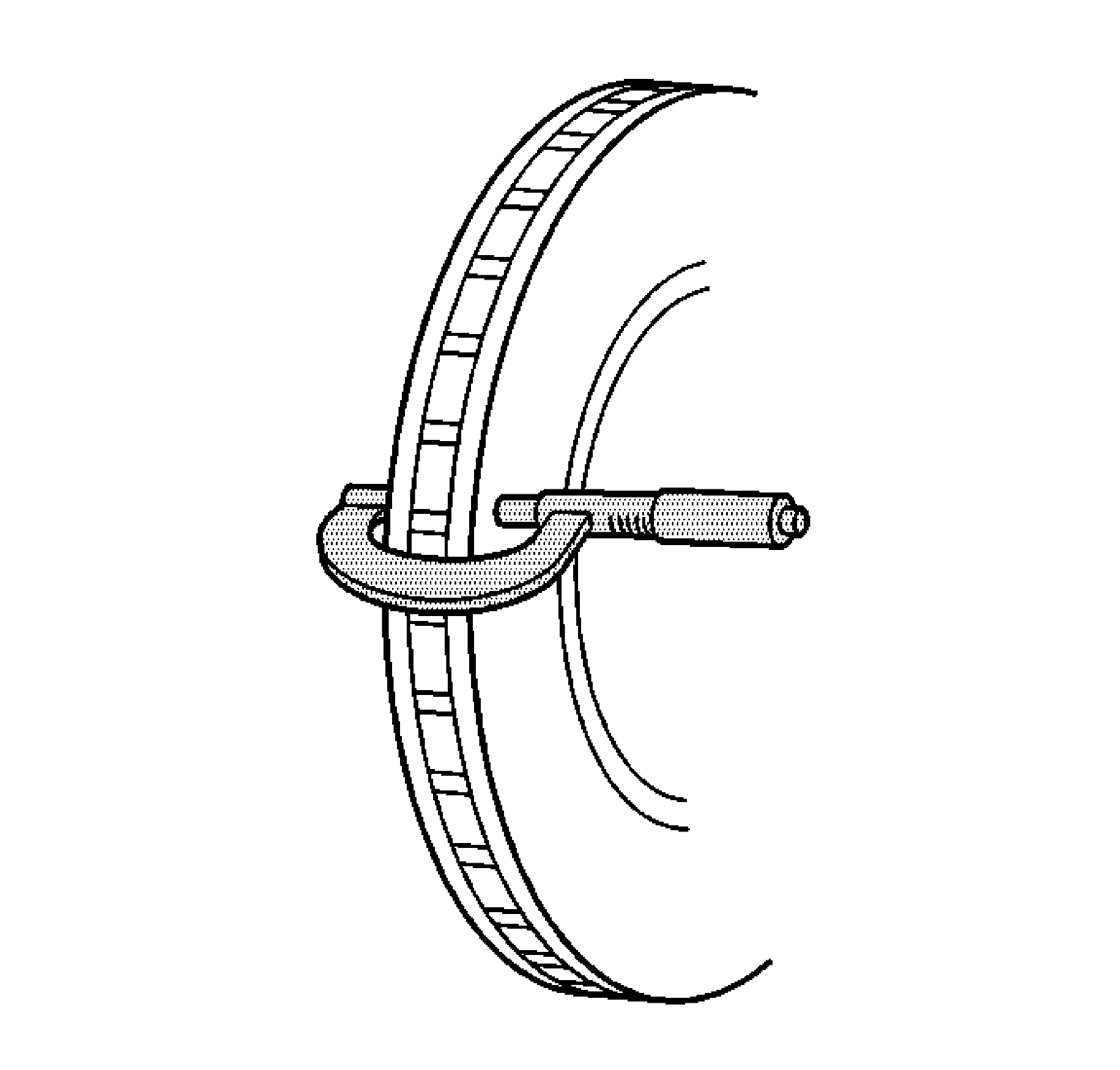For 1990-2009 cars only
- Raise and support the vehicle. Refer to Lifting and Jacking the Vehicle in General Information.
- Remove the wheels assembly. Refer to Tire and Wheel Removal and Installation in Tires and Wheels.
- Clean the friction surfaces of the brake disc with denatured alcohol, or an equivalent approved brake cleaner.
- Using a micrometer calibrated in thousandths-of-a-millimeter, or ten-thousandths-of-an-inch, measure and record the thickness of the brake disc at 4 points, evenly spaced around the brake disc.
- Make sure that the measurements are only taken within the friction surfaces and that the micrometer is positioned the same distance from the outer edge of the brake disc, about 13 mm (½ in), for each measurement.
- Calculate the difference between the highest and lowest thickness measurements recorded to obtain the amount of thickness variation.
- Compare the thickness variation measurement to the following specification:
- If the brake disc thickness variation measurement exceeds the specification, the brake disc requires refinishing or replacement.
Caution: Refer to Safety Glasses Caution in the Preface section.
Caution: Refer to Vehicle Lifting Caution in the Preface section.
Caution: Refer to Brake Dust Caution in the Preface section.

Specification
Brake disc maximum allowable thickness variation:
0.02 mm (0.001 in).
Important: Whenever a brake disc is refinished or replaced, the assembled lateral runout (LRO) of the brake disc must be measured to make sure optimum performance of the disc brakes.
